How to deal with aphids on tomatoes
Aphids on tomatoes are an unpleasant phenomenon, due to which you can get a bad harvest at the end of the season or even be left without it.
Tomatoes are most often affected by black, melon, white, peach and potato aphids, which enter plantings in various ways and carry dangerous viruses. If things are left to chance, aphids can easily give more than 50 generations per season and cause significant damage to all plantings at their summer cottage. You need to start fighting with it when the first symptoms appear:
- lagging tomato growth,
- deformation of shoots,
- the appearance of sticky molasses on the leaves,
- increased activity of ants around diseased plants.
Aphid control involves the use of biological, chemical, agrotechnical and physical-mechanical means, including a whole range of different measures to protect against pests. Read more about each of them in the article.
Biological methods
These are methods consisting in creating a favorable environment for insects that act as entomophages for aphids, and predators dangerous for it: ladybirds, insectivorous birds, hedgehogs and others.
- Predators
When growing tomatoes in open ground, ladybugs and birds are of great help in the fight against aphids. So, for example, in a year one ladybug can destroy more than 7000 aphids and their larvae. It also preys on spider mites, Colorado beetles, scale insects and slugs.
You can attract ladybugs to the site using pheromone baits (attractants), bait from dill, angelica, dandelions and tansy. The use of Wheast artificial food, which is sold in the form of a free-flowing mixture with a share of sugar for the growth and nutrition of beneficial insects, also helps.
You can attract aphid-pecking birds to the site with the help of saucers with bread crumbs, millet, seeds or any other delicacies. When the treats run out, they begin to destroy the pests.
- Parasites are entomophages
When growing tomatoes in a greenhouse, useful parasites such as telenomuses or trichograms, which settle in the tissues and eggs of host pests, help to get rid of aphids and gradually lead to their death. Such parasites are artificially bred in biological laboratories and are commercially available.
How to process tomatoes from aphids
Chemical methods for controlling aphids on tomatoes are based on the use of various agricultural pesticides, not only insecticides, but also fungicides and herbicides.
- Insecticides
They are available in the form of concentrated emulsions, wettable powders, spray dusts or granules for soil application and are intended to eliminate aphids at all stages of development.
It can be any synthetic or biological preparations containing organophosphorus compounds, pyrethroids and biopesticides: Actellik, Biotlin, Envidor, Confidor, Neoron.
Qualitative processing of tomatoes with pesticides helps to quickly get rid of all pests, but it can be dangerous for the harvest and is rarely used during flowering and fruiting crops.
- Fungicides and herbicides
It is recommended to spray tomatoes with fungicides after the extermination of pests if the plant looks depressed - to destroy pathogenic fungi and prevent fungal diseases carried by aphids.
Spraying with herbicides can be used to reduce the growth of weeds in the area where tomatoes are growing, and to improve their growing conditions to prevent the risk of re-disease.
Agrotechnical methods
This is a group of methods that includes various procedures aimed at preventing the appearance of aphids on tomatoes: seed preparation, correct placement of plants on the site, soil condition monitoring, etc.
- Seed preparation
For growing healthy plants with strong immunity, full-fledged seeds of zoned varieties are selected, well adapted to the conditions of a particular area. Once transplanted to a permanent location, they should be provided with sufficient lighting, fresh air and the required amount of clean water for irrigation.
- Placement in the garden
It is important to take into account the nuances of site planning and correctly draw up a planting scheme. For example, it is not recommended to grow tomatoes where pumpkin seeds, radishes or potatoes used to grow. They can be affected by common pests and diseases.
But good "neighbors" will be garlic and onions (they scare away aphids) and fragrant crops, the aroma of which attracts useful insects that destroy aphids: ladybirds, hoverflies, earwigs, ground beetles, predatory bugs and some species of wasps.
- Control over soil condition
Conscientious soil cultivation is the main agricultural remedy for aphids on tomatoes during their growth, contributing to the reproduction of beneficial microorganisms and the destruction of pests.
Liming the soil and the use of ammonia fertilizers create an unfavorable environment for the development of aphids. High hilling of plants during the period of active reproduction allows the destruction of parasite eggs. And mulching with peat and covering with pieces of roofing felts acts as a trap from which aphids cannot get out, becoming a victim of various insectivorous creatures.
Physical and mechanical methods
This group of methods includes:
- using traps of various types;
- thermal disinfection of planting material;
- manual collection of aphids.
Sticky trapping belts with a toxic substance or saucers filled with a decoction of tomato leaves and fruits with yeast and sugar, placed between rows of plantings, are used as traps.
Hand picking of eggs, larvae and adults of aphids helps to relieve severely damaged plants and, if necessary, remove them from the site to prevent the spread of the infection.
Folk remedies
Popular folk remedies can be used to treat plants from aphids during flowering and fruiting without causing much harm to the crop. They are made from laundry soap, medical alcohol, herbal decoctions, Coca-Cola and other materials at hand and are easily washed off with water. Unfortunately, they are not very effective and require repeated painstaking processing - washing each leaf, spraying adjacent plantings and watering the soil.
- Soap solution recipe
About 300 g of grated laundry soap or 100 g of tar soap should be diluted in 10 liters of water. Use for spraying.
Do not replace grated soap with liquid detergent. It will not give any result.
- Ash solution
Boil about 250-350 g of ash in 10 liters of water for 30 minutes. Use to rinse leaves.
- Onion infusion
Insist about 40–45 g of finely chopped onion heads and their husks in a liter of water for 4 hours. Strain. Use for spraying and watering.
- Pepper infusion
Insist a kilogram of chopped capsicum in 10 liters of water for a day. Use for spraying, additionally diluting the concentrate in a 1: 2 ratio with warm water immediately before use.
- Pine infusion
About 900 g of pine needles are infused in 4 liters of water for 7 days, stirring occasionally. The resulting concentrate is diluted with water in a 1: 1 ratio immediately before spraying.
- Dandelion decoction
Grind about 300 g of leaves and the same amount of dandelion roots and infuse for 3-4 hours in 10 liters of water. Use for spraying and watering.
- Fumigation with tobacco
Method suitable for greenhouse plants. 10-15 g of tobacco dust is poured into an iron container and set on fire to fill the room with thick white smoke that destroys aphids.
Do not forget that tomatoes need protection during the entire growth period: from the first shoots to the first fruits. Depending on the specifics of the task and the scale of the disaster, alternate the described methods with each other or apply in combination, and the pests will certainly leave your garden!
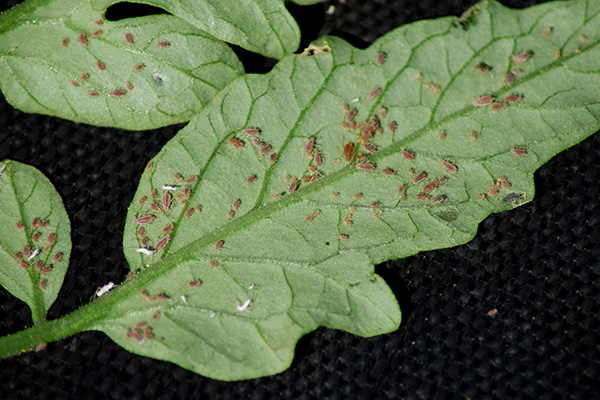
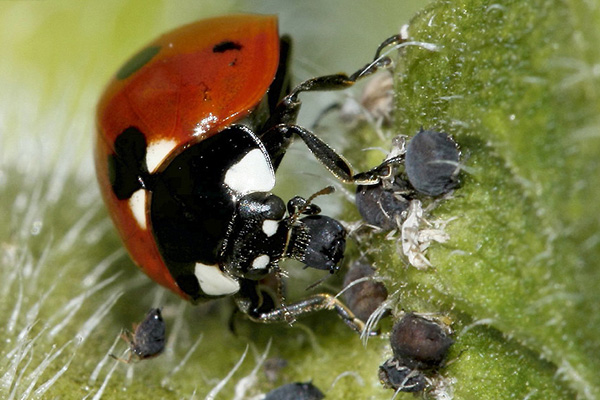

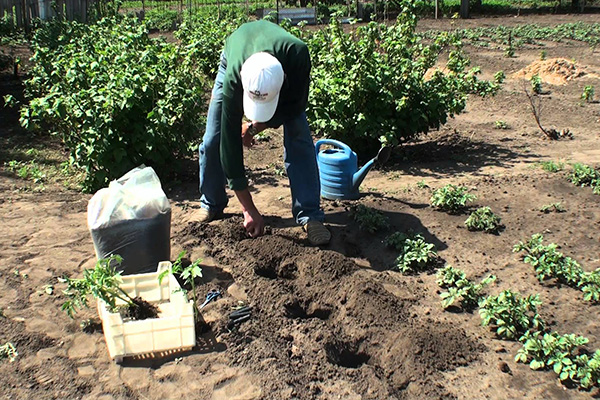
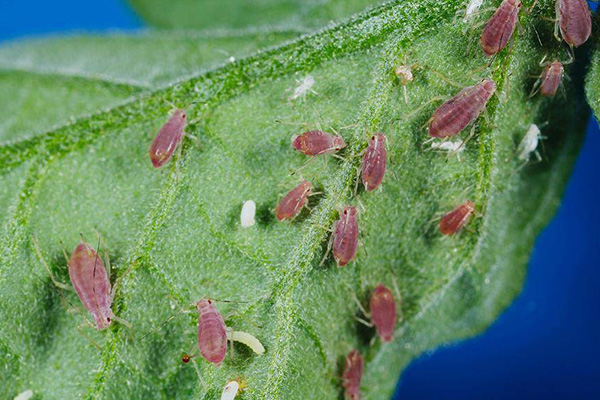


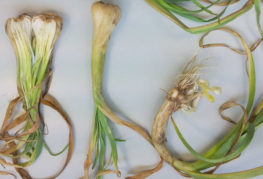
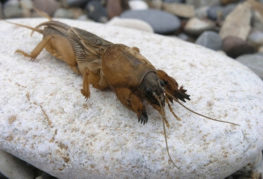

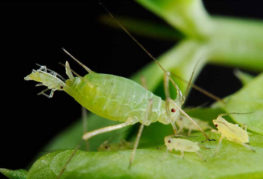
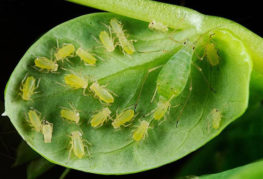
and will be published shortly.